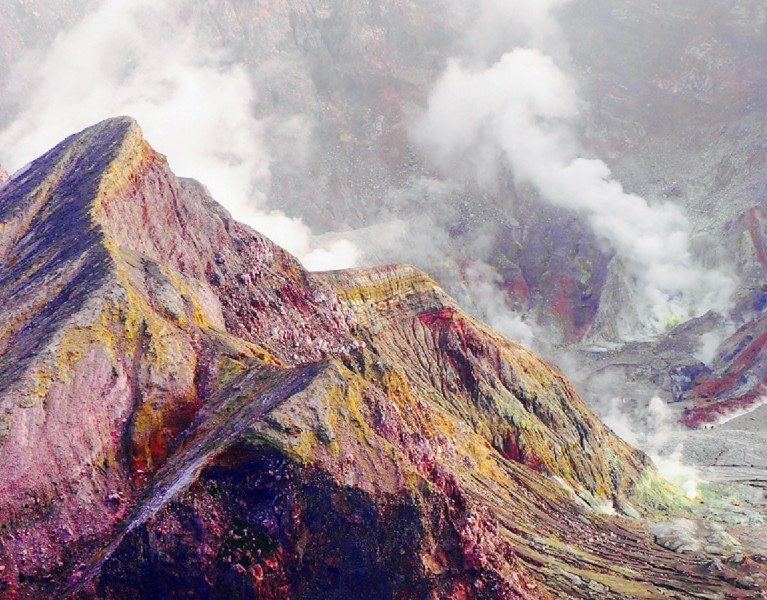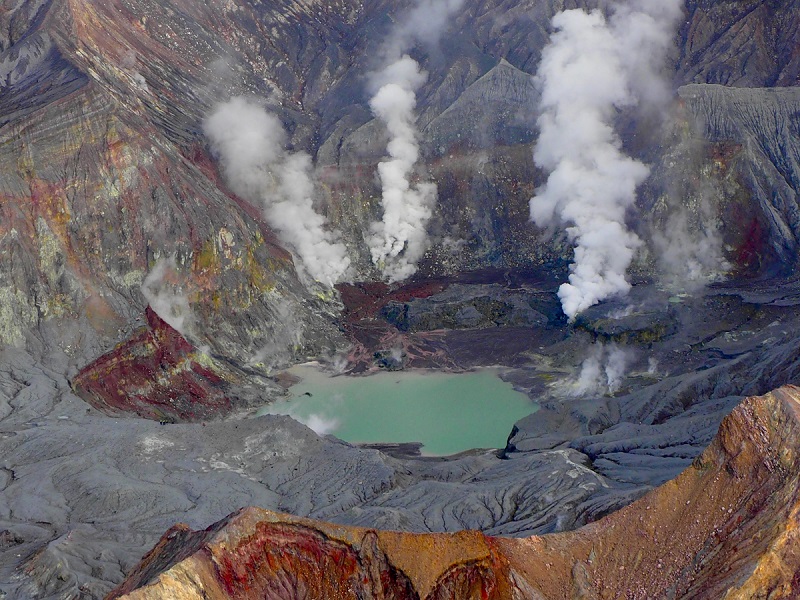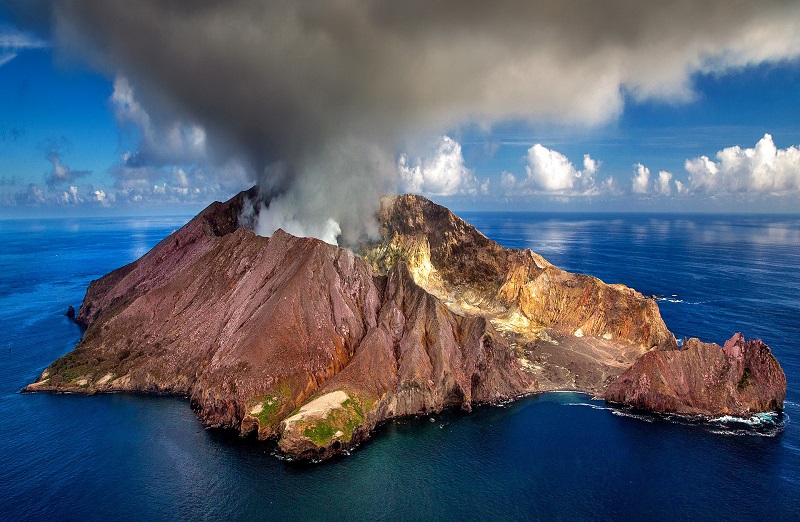
Who Says This Is Safe? Assessing the Risks of Adventure Travel
Table of Contents [Show]
Savvy travelers with experience in extreme tourism—which might include anything from ziplining in Costa Rica to attempting an Everest summit—have also taken note of the apparent ease by which people can gain access to adventures far beyond their level of expertise or physical capabilities. And that "expertise" includes an individual's ability to research and assess the risks involved using the context afforded by experience.
It's as if by hiring a guide, driving into a government-operated park, or joining a cruise-endorsed shore excursion, the adventurer says, "well, if it's open to the average Joe, it's got to be safe!"
When the Whakaari/White Island volcano erupted December 9, 2019, killing at least 17 tourists and guides and injuring dozens more, news and social media became aflutter with questions and accusations. Who was responsible? Should the tour companies have been allowed to operate that day, given recent geological warnings? How can we prevent these tragedies?
Were the visitors to Whakaari fully informed of the risks? I'd like to think most of them had a pretty good idea that in spite of modern geological monitoring, active volcanoes are unpredictable. Steam vents, gas emissions, and explosions can and will take experts by surprise because... nature. And volcano tourism isn't just about the scenery—there's an undeniable thrill in walking inside the caldera of an active volcano.
When it became known that GeoNet, New Zealand's seismic monitoring organization, had recently elevated the threat level at White Island/Whakaari, there was a knee-jerk public outcry against the tour guide company conducting business as usual. But for this and many other popular volcanoes, Level 2 (moderate to heightened volcanic unrest) is status quo and eruptions can occur without warning even at the lowest risk classification.
Warnings have oscillated between these (1 and 2) levels for many years, with little significant activity observed since a series of eruptions in the 1980s. —David Phillips, head of University of Melbourne's School of Earth Sciences at the University of Melbourne, Australia, for CNN

Is the classification system itself too vague? Maybe. But then again, would more specific threshold qualifications only lead to false assurances? Volcanoes are unpredictable, and in spite of advances in geophysical monitoring, it's impossible to guarantee safety to adventurers.
That doesn't prevent private operators, government oversight agencies, and industry organizations from doing their best to set safety standards.
According to The Australian, WorkSafe—New Zealand's adventure tourism workplace safety authority—visited White Island a couple of months before the eruption. Details of that visit are yet undisclosed, though one can assume the tour company and island owners were operating at least safely enough to prevent a forced shutdown. But now, New Zealand's citizens and government are debating whether even WorkSafe's seal of approval is enough. As if that's possible: The only guarantee against falling victim to a volcanic eruption is to stay away from active volcanoes. Tell that to the million or so people who live and work on Mt. Etna's slopes, and report back to me.
On one thing most travel and oversight experts can agree: Tourists should be required to read and sign consent forms that better inform them of (and boldly confront them with) the risks and expectations associated with any high-risk tourism, and tourists should be encouraged to make their own risk assessments by checking with the most appropriate meteorological, political, and geological monitoring agencies.
Three Essential Resources for All Adventure Travelers
No matter where you go and what earthly experience you plan to conquer, it's up to you to have the most accurate and current information available. The U.S. Department of State's Travel.State.Gov page is rich with resources and tools to keep you informed of your destination's geopolitical, crime, and health data.
Bookmark the World Weather Information Service page for accurate and official weather forecasts. Unfortunately, the WWIS mobile apps are clunky and need some improvement, but hopefully, they'll improve before your next trek.
Volcano enthusiasts should check with the Smithsonian / USGS Weekly Volcanic Activity Report for destinations anywhere on Earth before booking or embarking on a tour.
Tips for Managing Risk When Risk is Your Thing
- Look into a travel insurance plan that's appropriate to your destination and activities.
- Use licensed, accredited, and insured tour companies whenever possible. Only hire local, unlicensed guides if you're willing to trust their references with your life.
- Research and verify your tour companies in advance, even if you're booking through a cruise or vacation package. Google searches, local tourism boards, and online discussion boards can help you make informed decisions.
- Read all your tour company's provided advice for packing and preparing for your trip, and take their fitness and skill recommendations seriously. Don't hesitate to call or e-mail a representative if you have any questions.
- Print out or request a copy of the company's terms and conditions and liability waiver and read it before signing up.
- Don't book activities beyond your capabilities. This is especially tempting if your travel buddy is more experienced than you are.
- Listen carefully to all safety briefings, and ask for clarification if there's any confusion.
- Choose smaller group sizes. Aside from the obvious drawbacks of traveling with a huge crowd, you'll reduce the likelihood of being overlooked if you get lost or hurt.
- Once you've joined your group, ask to inspect equipment for wear and tear and reject any items that don't satisfy your standards. Stand firm!
- Share your itinerary and the tour operator's contact information with a trusted friend back home, and agree to check in after your safe return.

Keep It In Perspective, But Don't Let It Keep You Home
You can only do so much due diligence. Adventure travel is, by nature, a high-risk experience, and when nature (including human) comes into play, you have to be prepared to understand potential consequences and adapt to the unexpected. I've been on dozens of guided expeditions, including a well-marketed, celebrity-photographer-endorsed arctic trip where the guide went on a drunken rampage, assaulting a staff member before absconding with the only transportation—leaving all of us, photographer included, stranded 300 miles from civilization. I've also broken all my rules and hired a shady-looking guide for an off-the-beaten-path Jamaican cave tour that became one of my all-time favorite memories.
Once, I was all harnessed up for my turn with a parasail, only to call it off when a sudden thunderstorm built up. My guides were so insistent that I get my money's worth (no refunds!) that I had to break out my "God voice" as I shouted, "No." It wasn't the only time trip leaders have tried a little too hard to give me that "experience of a lifetime." For all the times I'm glad I took an extra risk, there are twice as many times I either wish I hadn't or looked back with relief that I was confident in my ability to trust my judgment.
Those who lost their lives on Whakaari/White Island certainly knew they were visiting a dangerous place, but given that roughly 20,000 tourists visit each year it's easy to understand why they felt the odds were reasonably in their favor. While December's tragedy was far from a fluke and gives us a lot to consider about the validity of volcano tourism as a whole, it's fair to say the 50-mile boat journey to the island would have been my greatest concern, given the risk of freak weather events, mechanical failures, and—as was the case in 2016—engine fires.
The best we can do is equip ourselves with the most current and relevant information about our escapades and assess potential threats independently of ads, endorsements, and the idealism born from our adventurous spirits. There are always other opportunities to challenge our limits and experience the thrill of our natural environment.
The worst we can do, though, is stay home altogether.
Featured Image - White Island volcano, New Zealand. Photo by Farrah Fuerst.


